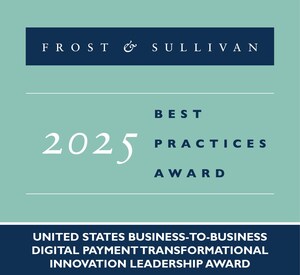Frost & Sullivan: Europe Shifting to Digital Money and Online Sales for Micropayments
New features such as prepaid, online and contactless solutions will accelerate micropayment evolution
LONDON, Feb. 25, 2013 /PRNewswire/ -- The micropayments market is set to grow rapidly in Europe. Overall, cash payments are decreasing in the region, and though they still remain the preferred means of payment, the emergence of micropayment solutions and products is fuelling the shift to digital money. In fact, defining a single direction for the European market, optimising fee structure and risk management, and enhancing end-user experience will surely boost the use of prepaid, online and contactless solutions for small payments.
New analysis from Frost & Sullivan on Opportunities in the Micropayments Market finds that the growth of micropayments solutions will be driven by the usage of pre-paid, contactless, and mobile payment solutions. The analysis determines that use of contactless payment cards systems in Europe is expected to increase at a compound annual growth rate (CAGR) of 28.7 per cent from 2011 to 2017. Likewise, with the massive adoption of smartphones and increasing penetration of tablets in Europe, mobile commerce will record a CAGR of 10.6 per cent between 2011 and 2018.
The shift to digital money has a substantial benefit for banks and governments alike. In Europe, the cost of handling cash is high. The European Payment Council (EPC) is working on ways to improve processes and reduce the total cost. "The process of production, transportation, protection and destruction of cash is complex and expensive, and with only 30 per cent of the produced money in circulation, governments are looking to optimise the national cost of cash," said Frost & Sullivan ICT Global Program Director Jean-Noel Georges. "The economic crisis has also forced governments to streamline tax collection and fight against shadow markets through the use of electronic money and associated Web services."
Moving away from cash, however, comes with many challenges attached. The preference for cash payment among the older generation of users, issues with the business model and lack of infrastructure as well as a clear marketing message have pegged back market growth in the short term.
Consumers have shown varying degrees of readiness to adopt contactless cards. Frost & Sullivan believes that education on the user and merchant sides, with a strong focus on the security features of contactless technologies, will help to popularise the usage of contactless cards, and potentially, of contactless-based mobile payments.
As of now, the future of prepaid cards and prepaid mobile solutions seems brighter. "Turning cash into electronic funds in a stored value account is currently the best approach," noted Georges. "A flexible solution, which includes issuing a prepaid mobile payment account where customers can load the money through peer-to-peer transfers, cash deposits or bank cards and then use the prepaid value with merchants, will encourage non-cash payments."
Lastly, cloud-based mobile payments are also expected to contribute to the expansion of the micropayments market. "Cloud-based m-payments, in principle, are an extension of the traditional online commerce market. However, we believe that as cloud-based m-payment matures, and its awareness among consumers and merchants increases, the solution will play an important role for the in-store payments and micropayments markets," said Georges.
Creating marketing and promotional tools based on target groups and offering aggressive awards and discount programs will also spur demand for micropayments.
If you are interested in more information on this research, please send an email to Joanna Lewandowska, Corporate Communications, at [email protected], with your full contact details.
Opportunities in the Micropayments Market (9A68-67) is part of ICT Market Insights, which includes research services such as: Cloud Computing in the European Banking Sector, ICT in European Financial Services: A CIO Perspective, ICT Market in European Banking Sector - Market Model, and European Payment Processing Platform Market. All research services included in subscriptions provide detailed market opportunities and industry trends evaluated following extensive interviews with market participants.
About Frost & Sullivan
Frost & Sullivan, the Growth Partnership Company, works in collaboration with clients to leverage visionary innovation that addresses the global challenges and related growth opportunities that will make or break today's market participants.
Our "Growth Partnership" supports clients by addressing these opportunities and incorporating two key elements driving visionary innovation: The Integrated Value Proposition and The Partnership Infrastructure.
- The Integrated Value Proposition provides support to our clients throughout all phases of their journey to visionary innovation including: research, analysis, strategy, vision, innovation and implementation.
- The Partnership Infrastructure is entirely unique as it constructs the foundation upon which visionary innovation becomes possible. This includes our 360 degree research, comprehensive industry coverage, career best practices as well as our global footprint of more than 40 offices.
For more than 50 years, we have been developing growth strategies for the global 1000, emerging businesses, the public sector and the investment community. Is your organization prepared for the next profound wave of industry convergence, disruptive technologies, increasing competitive intensity, Mega Trends, breakthrough best practices, changing customer dynamics and emerging economies?
Contact Us: Start the discussion
Subscribe: Newsletter on "the next big thing"
Register: Gain access to visionary innovation
Contact:
Joanna Lewandowska
Corporate Communications – Europe
P: +48 22 481 62 20
E: [email protected]
http://www.frost.com
www.twitter.com/frost_sullivan
www.facebook.com/FrostandSullivan
SOURCE Frost & Sullivan
WANT YOUR COMPANY'S NEWS FEATURED ON PRNEWSWIRE.COM?
Newsrooms &
Influencers
Digital Media
Outlets
Journalists
Opted In





Share this article